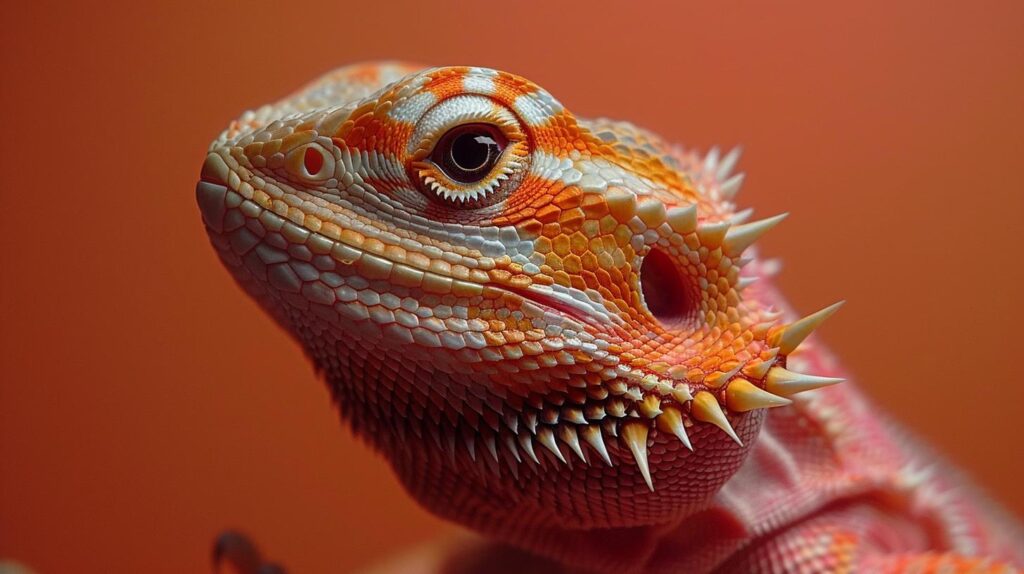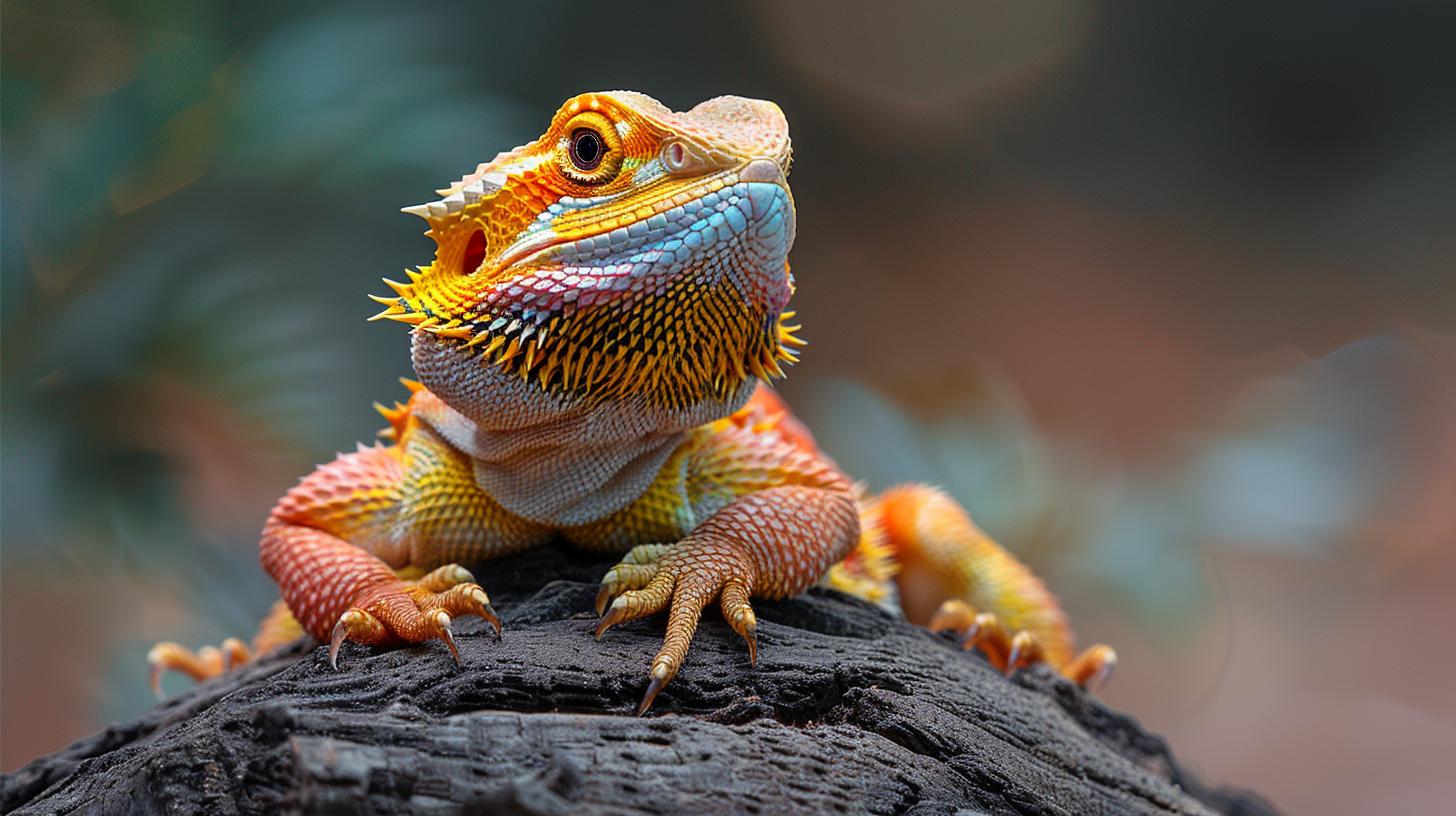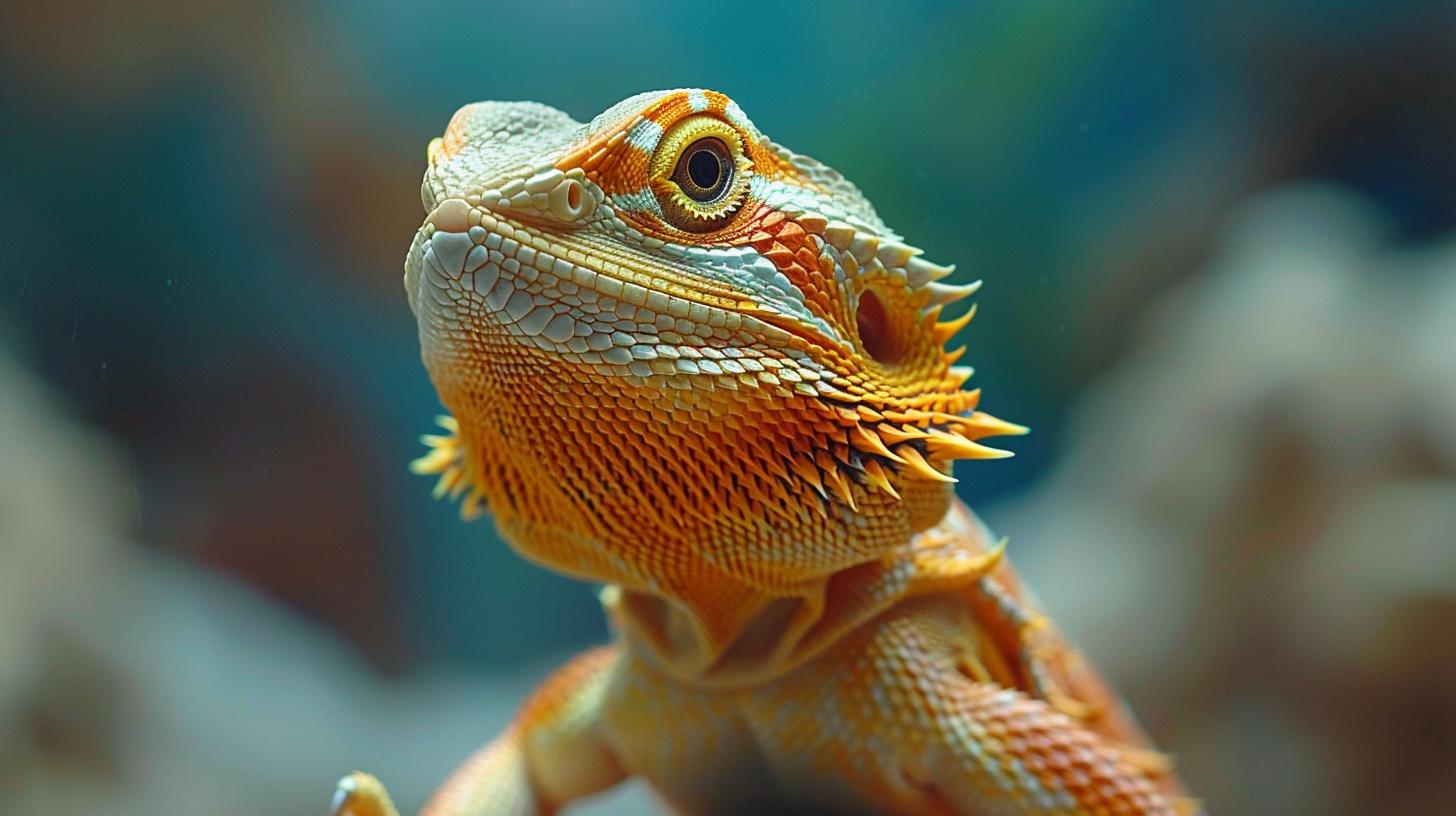Ideal Humidity Levels for Bearded Dragon Well-Being

- Introduction to Bearded Dragons and Their Habitat
- Understanding Humidity and Its Effects on Bearded Dragons
- Ideal Humidity Levels for Bearded Dragons
- Tools for Monitoring and Adjusting Humidity
- Implementing Humidity Control in Your Bearded Dragon’s Habitat
- Common Humidity-Related Health Issues in Bearded Dragons
- Moving Forward
- Frequently Asked Questions
Introduction to Bearded Dragons and Their Habitat
When it comes to the well-being of bearded dragons, understanding the bearded dragon humidity levels in their habitat is paramount. Originating from the arid regions of Australia, these fascinating creatures have adapted to thrive in environments where conditions can be harsh and unforgiving.
This stark landscape has shaped the bearded dragon's unique requirements for survival, making the replication of their natural habitat crucial for their health when in captivity. By delving into the origins of bearded dragons, we set a foundation for appreciating the importance of maintaining an environment that closely mimics their native deserts.
Humidity plays a critical role in determining the quality of life for bearded dragons. Adequate levels can mean the difference between a thriving pet and one that suffers from chronic health issues. The effects of incorrect humidity levels on these reptiles are multifaceted, touching on everything from problematic shedding to more serious respiratory infections.
Understanding what humidity is-the amount of water vapor present in the air-and its effects on your scaly friend is essential. It becomes clear then, why striking just the right balance requires both knowledge and attentiveness from any bearded dragon caretaker.
Identifying and maintaining the ideal humidity levels for your bearded dragon cannot be overstated. These preferred ranges are not arbitrary; they mimic the arid climates where these animals naturally reside.
Scientific assessments and recommendations from reptile experts offer insight into creating an optimal living condition for your pet. Through understanding these guidelines and utilizing modern tools designed to monitor and adjust environmental factors within enclosures, enthusiasts can ensure their bearded dragons lead healthy lives reminiscent of their wild counterparts.
Understanding Humidity and Its Effects on Bearded Dragons
Maintaining the correct *bearded dragon humidity* levels within an enclosure is not merely a detail-it's a fundamental aspect of ensuring they thrive. The unique physiology of bearded dragons makes them particularly sensitive to their environment, mirroring the conditions of the arid landscapes from which they originate.
Understanding how variations in humidity can impact these reptiles is critical for anyone looking to provide the best care. For example, while low humidity can lead to shedding difficulties, overly high humidity might predispose them to respiratory infections, making it evident why balancing this aspect of their habitat is crucial.
Venturing into the specifics, the ideal humidity range for bearded dragons is considered to be between 30% to 40%. This level closely simulates their natural Australian desert environment and supports their overall health and well-being. Achieving and maintaining this optimal range requires both vigilance and a bit of technical help.
Tools such as hygrometers play a vital role in monitoring ambient moisture levels accurately. While simple methods like adjusting water dish size or increasing ventilation can correct minor deviations, more significant imbalances may necessitate the use of specialized equipment such as dehumidifiers or misting systems.
Implementing routine checks and adjustments ensures that the *bearded dragon humidity* levels stay within the desired range, thereby mitigating risks associated with both dehydration and excessive moisture exposure. Regular habitat maintenance-cleaning water dishes, removing uneaten food promptly, and choosing substrates that don't retain excessive moisture-further aids in stabilizing environmental conditions within an enclosure.
These practices highlight an owner's commitment not just to mimic but to closely replicate an environment that allows their bearded dragons not only to live but flourish.
| Humidity Level Impact | Recommended Action |
|---|---|
| Below 30% | Increase water dish size or mist lightly |
| Above 40% | Improve ventilation or use a dehumidifier |
These systematic approaches toward managing humidity underscore its significance in fostering a healthy life for bearded dragons. With expertise and attention to detail, enthusiasts can create an optimal living space that gels well with these creatures' intrinsic needs.
Ideal Humidity Levels for Bearded Dragons
Maintaining the ideal bearded dragon humidity is critical for replicating the arid conditions of their natural habitat and ensuring their health and well-being. The consensus among herpetologists and experienced bearded dragon caregivers points towards an optimal humidity range of 30-40%.
This specific range not only supports their unique physiological needs but also minimizes the risk of common health issues associated with incorrect humidity levels, such as respiratory infections or shedding problems. Understanding and striving to maintain this delicate balance can significantly impact the overall happiness and longevity of these fascinating reptiles.
To effectively manage bearded dragon humidity within the ideal range, it is essential to have accurate and reliable tools at your disposal. Here are some recommended instruments for monitoring and adjusting enclosure humidity:
- Digital Hygrometers: These devices offer precise readings and can be easily installed in various locations within the enclosure to ensure consistent humidity levels throughout.
- Misting Systems: Automated misting systems can help increase humidity levels efficiently, especially in enclosures that tend to be too dry. Manual misting bottles are also an option, though they require more effort and consistency on part of the caregiver.
- Dehumidifiers or Ventilation: In cases where humidity levels consistently exceed the 40% mark, employing a dehumidifier or improving ventilation within the tank can help reduce moisture content in the air.
Implementing these tools and techniques not only assists in achieving the ideal bearded dragon humidity levels but also fosters an environment that closely mirrors their natural desert surroundings. Regular monitoring is key, as fluctuations in room temperature, seasonal changes, or modifications to the enclosure setup can all influence humidity levels. By staying vigilant and making adjustments as needed, caregivers can guarantee a habitat that promotes optimum health and happiness for their bearded dragons.
However, understanding how to manipulate environmental factors within your pet's habitat is just one piece of the puzzle. The next sections will delve into practical tips for daily maintenance routines that ensure stable beardie environments along with insights on selecting substrates that facilitate proper humidity control without compromising cleanliness or safety.

Each aspect plays a vital role in crafting an ideal living space tailored to a beardie's specific needs - from physical comfort to mental stimulation - highlighting the multifaceted approach required for successful reptile husbandry.
Tools for Monitoring and Adjusting Humidity
Maintaining the perfect bearded dragon humidity level within an enclosure is not just beneficial; it's essential for mimicking the natural habitat of these reptiles and ensuring their well-being. In pursuit of creating such an environment, pet owners should familiarize themselves with a variety of tools designed for monitoring and adjusting humidity. Ensuring that these tools are properly utilized can make all the difference in providing a comfortable and healthy living space for bearded dragons.
Firstly, a *hygrometer* stands out as one of the most crucial tools in this endeavor. This device measures the amount of moisture in the air, allowing owners to monitor humidity levels accurately within the enclosure. There are two main types of hygrometers suitable for use:
- Digital hygrometers, which offer precise readings and sometimes come with additional features like temperature measurement.
- Analog hygrometers, which operate without batteries but might require calibration for accurate readings.
Furthermore, adjustments to humidity levels can often be necessary to maintain that ideal range conducive to your bearded dragon's health. For this task, several methods may be employed:
- Misting systems provide a fine spray of water within the enclosure, effectively raising humidity levels. These can be manual or automated, with timers to schedule misting sessions throughout the day.
- Manual misting with a spray bottle is a more hands-on approach and allows owners to directly control when and how much they want to increase humidity.
- Additionally, introducing or removing *water features* and adjusting ventilation can also help regulate moisture levels.
To prevent any adverse effects on your bearded dragon's health due to incorrect humidity levels, regular checks using these tools are vital. For instance, during shedding periods, a slight increase in enclosure humidity can facilitate easier shedding. On the other hand, maintaining lower humidity levels helps preclude respiratory infections-a common issue associated with high moisture environments.
In essence, integrating these tools into your maintenance routine empowers you to create an optimal habitat that closely resembles what bearded dragons would experience in their natural Australian deserts. This practice elevates not only their physical health but also contributes positively to their overall happiness and comfort within captivity settings. As we proceed further into discussing practical advice on achieving these ideal conditions comprehensively.
Implementing Humidity Control in Your Bearded Dragon’s Habitat
Achieving the right conditions for your bearded dragon involves more than just setting up a habitat; it requires constant monitoring and adjustment to keep everything within the ideal range. Humidity plays a pivotal role in this balance, directly impacting your reptile's health.
The challenge lies in mimicking the arid environment of Australia's outback, the native home of bearded dragons, inside an enclosure. This task can seem daunting at first, but with the right tools and techniques, it becomes manageable and straightforward.
Understanding the need for precise humidity levels is crucial. Too low, and your bearded dragon may suffer from dehydration or shedding problems; too high, and you risk respiratory infections or skin issues. The goal is to maintain an optimal bearded dragon humidity level that promotes health and replicates their natural habitat as closely as possible. This section will guide you through practical steps towards achieving that balance, ensuring your pet thrives in its environment.
Choosing the Right Equipment
The first step in controlling humidity is to select the appropriate tools. A reliable hygrometer is essential for accurately monitoring humidity levels within the enclosure. Opt for digital models for their precision and ease of use. Additionally, considering a misting system can help increase humidity if necessary, especially during shedding periods when higher moisture levels can facilitate easier skin removal. Nonetheless, manual misting using a simple spray bottle can also suffice for smaller enclosures or budgets.
Adjusting Enclosure Conditions
Substrate choice significantly affects moisture levels within a bearded dragon's habitat. Materials like sand mimic the dragon's natural desert setting but offer little in retaining moisture for humidity control. Alternatively, substrates such as coconut fiber or specially formulated reptile bark help moderate moisture levels without becoming overly damp. Remember to avoid overly wet conditions as these are not suitable for bearded dragons and can lead to health issues.
Incorporating live plants into an enclosure is another method to subtly influence humidity levels while also enhancing its aesthetic appeal-opt for species that thrive in similar arid conditions as those found in Australia's desert regions. However, ensure any plant added to your bearded dragon's home is safe if ingested, as these curious creatures might nibble on them.
Controlling humidity within your bearded dragon's environment doesn't have to be complicated. With regular monitoring using reliable equipment and making adjustments based on those readings-whether by altering substrate materials or tweaking the amount of supplemental misting-maintaining ideal moisture levels becomes an integrated part of caring for your pet. Implementing these measures will not only help fulfill their physiological needs but also contribute greatly to their overall well-being.
Understanding the importance of maintaining ideal humidity levels in your bearded dragon's habitat is crucial for preventing a host of health issues. The unique physiology of these reptiles makes them particularly sensitive to changes in their environment, including fluctuations in humidity.
When the proper balance is not met, it can lead to several conditions that may affect their well-being and overall health. It's essential for pet owners to recognize the signs and symptoms of humidity-related issues early on to ensure timely treatment and care.

The role of bearded dragon humidity cannot be overstated, functioning as a key element in creating a conducive living space that mirrors their natural desert-like habitats. While these creatures are hardy and adaptable, their bodies are finely tuned to thrive under specific environmental conditions. Straying too far from these ideal parameters, particularly regarding humidity levels, sets the stage for potential health problems that could impede their quality of life.
Respiratory Infections
One common issue linked to incorrect humidity levels is respiratory infections. When the air within a bearded dragon's enclosure is too moist or humid, it creates an environment where bacteria can flourish, leading to respiratory distress. Symptoms such as wheezing, difficulty breathing, or even mucus accumulation around the nostrils might indicate that the humidity settings need urgent adjustment. Maintaining a dry and warm habitat closely resembling their native Australian arid regions can help prevent these infections from developing.
Shedding Problems
On the flip side, an overly dry habitat can also pose challenges for bearded dragons, particularly during shedding periods. Proper shedding is vital for their growth and health, but without adequate moisture in the air, dragons may experience incomplete sheds or dysecdysis. This can result in irritation and discomfort as old skin does not detach fully or evenly across their body. Incorporating strategic misting sessions while closely monitoring enclosure *humidity levels* offers a solution by facilitating smoother sheds.
Skin Infections
Lastly, incorrect humidity conditions may lead to skin infections marked by discolorations or sores on the bearded dragon's skin. Excessively damp environments support fungal growths which might cause these infections or exacerbate pre-existing conditions. Ensuring that your pet's living area neither becomes too humid nor remains excessively dry involves regular checks with reliable hygrometers and responding promptly to readings outside the advised range.
By keeping an eye out for symptoms associated with both low and high humidity levels, bearded dragon owners can take proactive steps towards mitigating risks related to common humidity-related health issues. Prioritizing an environment tailored closely after their desert origins helps pave the way towards nurturing happy and healthy reptiles free from discomfort caused by inadequate care practices concerning humidity management.
Moving Forward
In wrapping up our in-depth exploration of the ideal humidity levels for bearded dragon well-being, we've journeyed from the arid landscapes of Australia to the very enclosures we fashion in our homes for these fascinating reptiles. We understand now more than ever the delicate balance required to mimic their natural habitat, emphasizing not just love and care but scientific precision in maintaining humidity levels within our pet's environment.
The significance of bearded dragon humidity cannot be overstated-it is not just a parameter to check off a list, but a vital component that influences their health, behavior, and overall happiness.
Through the insights shared, it becomes clear that achieving and sustaining the right humidity range is both an art and a science. Armed with hygrometers, misting systems, and a keen eye for behavioral cues, every bearded dragon caretaker can create an oasis that supports shedding, respiratory health, and day-to-day comfort.
This journey isn't without its trials; however, being vigilant about regular habitat maintenance and adopting preventive measures against common humidity-related health issues will pave the way for a thriving life for your scaled companion.
We invite you to continue enriching your knowledge on nurturing these splendid creatures by diving into more resources available on our website. Whether you're seeking advice on optimal habitat setups or wish to learn more about the nuances of bearded dragon care, our compilation of articles stands ready to guide you through every step of your pet parenting journey. Let's embark on this path together - fostering environments where our bearded dragons not only survive but flourish.
Frequently Asked Questions
Is 60% Humidity Too High for Bearded Dragon?
A humidity level of 60% is generally considered too high for a bearded dragon's enclosure. Bearded dragons originate from arid environments where the humidity tends to be much lower, usually between 20% to 40%. High humidity can lead to respiratory issues and fungal infections, which are harmful to their health.
Is 20% Humidity Bad for a Bearded Dragon?
A humidity level of 20% is on the lower end but not necessarily bad for a bearded dragon, especially if it's only for a short period. This range falls within the acceptable humidity levels for these reptiles, echoing their natural desert habitat.
However, consistent monitoring is advisable to ensure it doesn't drop further, which could potentially dry out their skin.
Should I Mist My Bearded Dragons Tank?
Misting a bearded dragon’s tank can momentarily increase humidity levels, which might be necessary under certain conditions like shedding. However, frequent misting is not recommended as it raises the overall moisture in the environment leading to excessively high humidity levels that are unsuitable and unhealthy for your bearded dragon.
How Do I Lower the Humidity in My Tank?
To lower the humidity in your tank effectively, consider ventilating the enclosure more efficiently by increasing air flow with additional vents or a fan. You can also replace part of the water source inside the tank with dryer substrates or objects that do not retain moisture easily.
Using a dehumidifier outside the enclosure in the room where you keep your tank can also help in controlling overall humidity levels.
Is 70 Degrees OK for a Bearded Dragon at Night?
A temperature of 70 degrees Fahrenheit at night is generally considered acceptable for a bearded dragon. Since these reptiles are used to cooler temperatures during nighttime in their natural habitat, maintaining a similar temperature gradient in captivity simulates their environment closely and supports healthy sleeping patterns.
How Do I Lower the Humidity in My Bearded Dragon?
Lowering humidity directly in your bearded dragon's environment involves improving ventilation and reducing sources of excess moisture inside their terrarium. Use absorbent bedding materials that do not retain water easily and regularly remove any water spilled around drinking areas immediately.
If necessary, employing a small dehumidifier nearby or ensuring room air conditioners maintain drier conditions can also assist significantly in managing optimal levels conducive to your pet's well-being.
Leave a Reply
You must be logged in to post a comment.